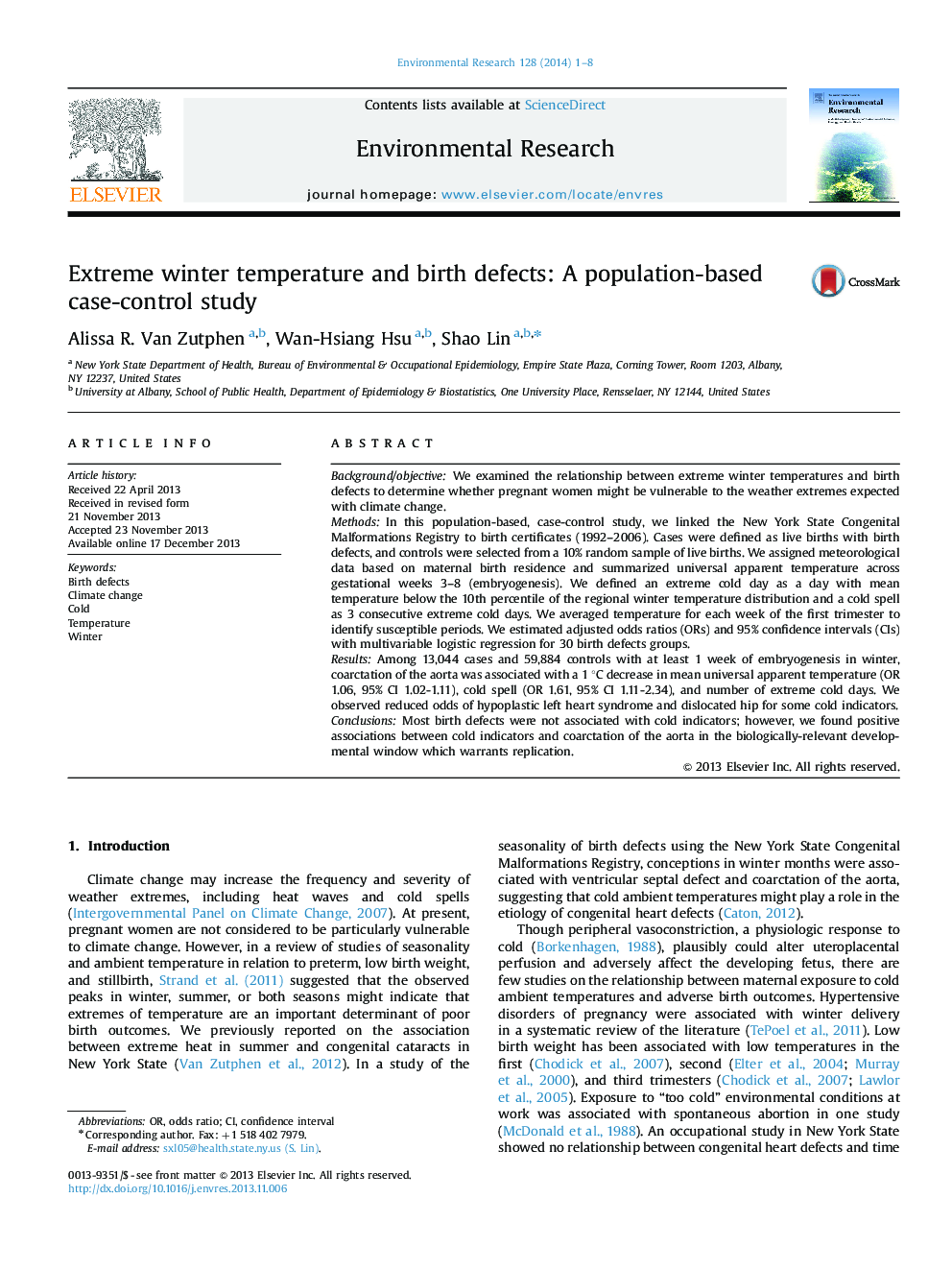| کد مقاله | کد نشریه | سال انتشار | مقاله انگلیسی | نسخه تمام متن |
|---|---|---|---|---|
| 4469923 | 1622573 | 2014 | 8 صفحه PDF | دانلود رایگان |
• We studied the relationship between extreme winter temperatures and birth defects.
• We examined universal apparent temperature, cold spells, and extreme cold days.
• Most birth defects were not associated with these exposures during embryogenesis.
• However, coarctation of the aorta was associated with cold weather indicators.
Background/objectiveWe examined the relationship between extreme winter temperatures and birth defects to determine whether pregnant women might be vulnerable to the weather extremes expected with climate change.MethodsIn this population-based, case-control study, we linked the New York State Congenital Malformations Registry to birth certificates (1992–2006). Cases were defined as live births with birth defects, and controls were selected from a 10% random sample of live births. We assigned meteorological data based on maternal birth residence and summarized universal apparent temperature across gestational weeks 3–8 (embryogenesis). We defined an extreme cold day as a day with mean temperature below the 10th percentile of the regional winter temperature distribution and a cold spell as 3 consecutive extreme cold days. We averaged temperature for each week of the first trimester to identify susceptible periods. We estimated adjusted odds ratios (ORs) and 95% confidence intervals (CIs) with multivariable logistic regression for 30 birth defects groups.ResultsAmong 13,044 cases and 59,884 controls with at least 1 week of embryogenesis in winter, coarctation of the aorta was associated with a 1 °C decrease in mean universal apparent temperature (OR 1.06, 95% CI 1.02-1.11), cold spell (OR 1.61, 95% CI 1.11-2.34), and number of extreme cold days. We observed reduced odds of hypoplastic left heart syndrome and dislocated hip for some cold indicators.ConclusionsMost birth defects were not associated with cold indicators; however, we found positive associations between cold indicators and coarctation of the aorta in the biologically-relevant developmental window which warrants replication.
Journal: Environmental Research - Volume 128, January 2014, Pages 1–8
